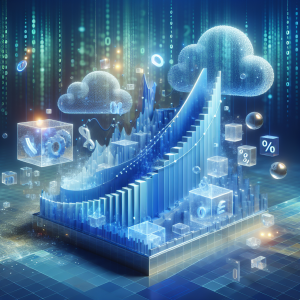Introduction
In today’s rapidly evolving digital landscape, organizations are increasingly leveraging Artificial Intelligence (AI) to revolutionize their DevOps practices. By incorporating AI into continuous integration and deployment processes, businesses can automate repetitive tasks, optimize software development cycles, and gain valuable data-driven insights. According to Gartner, AI is projected to generate over $3 trillion in business value annually by 2024, underscoring its critical role for companies seeking a competitive edge.
For decision-makers looking to streamline operations and drive innovation, integrating AI into DevOps practices offers a powerful opportunity. This guide will explore how businesses can harness machine learning automation tools and intelligent CI/CD pipelines to boost efficiency and foster groundbreaking advancements in software development.
The Role of AI in Enhancing DevOps Practices
1. Automating Routine Tasks with Machine Learning
At the core of effective DevOps strategies is automation, and AI integration allows teams to automate complex processes that were once manual and time-consuming. By deploying machine learning algorithms, companies can identify patterns and foresee potential issues before they escalate.
Key Benefits:
- Increased Efficiency: Automation minimizes human error and accelerates development cycles.
- Proactive Issue Resolution: Predictive analytics enable early problem detection, reducing downtime.
- Cost Savings: Reducing manual intervention lowers operational costs significantly.
Practical Example:
Consider a financial services company that utilizes AI to automate its incident response processes. By implementing machine learning algorithms, the company can automatically detect anomalies in transaction patterns and swiftly address potential fraud threats, thereby enhancing security measures without extensive human oversight.
2. Implementing Intelligent CI/CD Pipelines
Continuous Integration (CI) and Continuous Deployment (CD) are essential components of DevOps that ensure swift software updates delivery. Integrating AI into these pipelines can enhance their effectiveness by:
- Streamlining Code Reviews: Automating code analysis to identify errors or optimization opportunities.
- Predicting Bottlenecks: Anticipating delays in the deployment process, allowing for timely interventions.
- Optimizing Resources: Dynamically allocating resources based on real-time demand and predictive analytics.
Additional Insights:
Implementing AI-driven CI/CD pipelines not only accelerates software delivery but also ensures higher quality. For instance, machine learning models can analyze historical data to predict which parts of the codebase are more prone to defects, allowing teams to focus testing efforts where they matter most.
3. Utilizing Data-Driven Insights from AI
AI’s ability to analyze vast datasets empowers organizations with actionable insights that drive decision-making. By leveraging AI in DevOps, businesses can:
- Optimize Software Development Cycles: Use AI-generated insights to streamline processes and eliminate inefficiencies.
- Enhance Product Quality: Employ machine learning models to predict potential defects and improve testing protocols.
Case Study:
A global e-commerce platform leverages AI-driven analytics to optimize its software development lifecycle. By analyzing customer usage data, the company can prioritize feature development based on user demand, resulting in a more responsive and efficient product offering.
Industry Trends and Future Predictions
As AI continues to evolve, its integration into DevOps practices will become increasingly sophisticated. Here are some emerging trends:
- AI-Driven Development Environments: Future tools may provide real-time recommendations during code writing, enhancing developer productivity.
- Enhanced Security Measures: AI can play a crucial role in identifying and mitigating security vulnerabilities throughout the development pipeline.
- Collaborative Automation: Integrating AI with collaborative platforms will facilitate more seamless teamwork across global teams.
Case Studies: Leading the Way
Netflix: Pioneering AI Integration in DevOps
Netflix, a leader in streaming services, has harnessed AI to enhance its DevOps practices. By implementing machine learning algorithms, Netflix can automate routine tasks and optimize its CI/CD pipelines, leading to faster deployment times and improved customer experience.
Additional Insights:
Netflix’s use of AI extends beyond automation; the company also employs predictive analytics to anticipate server load and preemptively manage resources, ensuring uninterrupted streaming for millions of users worldwide.
Silicon Valley Innovations
Silicon Valley companies are at the forefront of integrating AI into DevOps. Utilizing platforms like Google Cloud AI Platform, these organizations push the boundaries of what is possible with artificial intelligence in software development.
Example:
A tech giant uses Google Cloud’s machine learning tools to automate its deployment processes, significantly reducing time-to-market for new features while maintaining high-quality standards.
Actionable Insights and Practical Advice
For businesses looking to integrate AI into their DevOps practices, consider the following steps:
- Start Small: Implement AI in one area of your DevOps process to understand its impact before scaling up.
- Invest in Training: Ensure your team is equipped with the skills needed to leverage AI tools effectively.
- Collaborate Across Departments: Foster collaboration between development, operations, and data science teams to maximize the benefits of AI integration.
- Monitor and Iterate: Continuously monitor the performance of AI-driven processes and make iterative improvements based on feedback.
Conclusion
Integrating AI into DevOps practices offers a transformative opportunity for businesses seeking efficiency, innovation, and competitive advantage. By automating routine tasks, optimizing CI/CD pipelines, and utilizing data-driven insights, organizations can significantly enhance their software development processes. As AI technologies continue to evolve, staying ahead of industry trends will be crucial in maintaining leadership in the digital space.
Embrace the potential of AI in DevOps and unlock new levels of efficiency and innovation for your organization.



